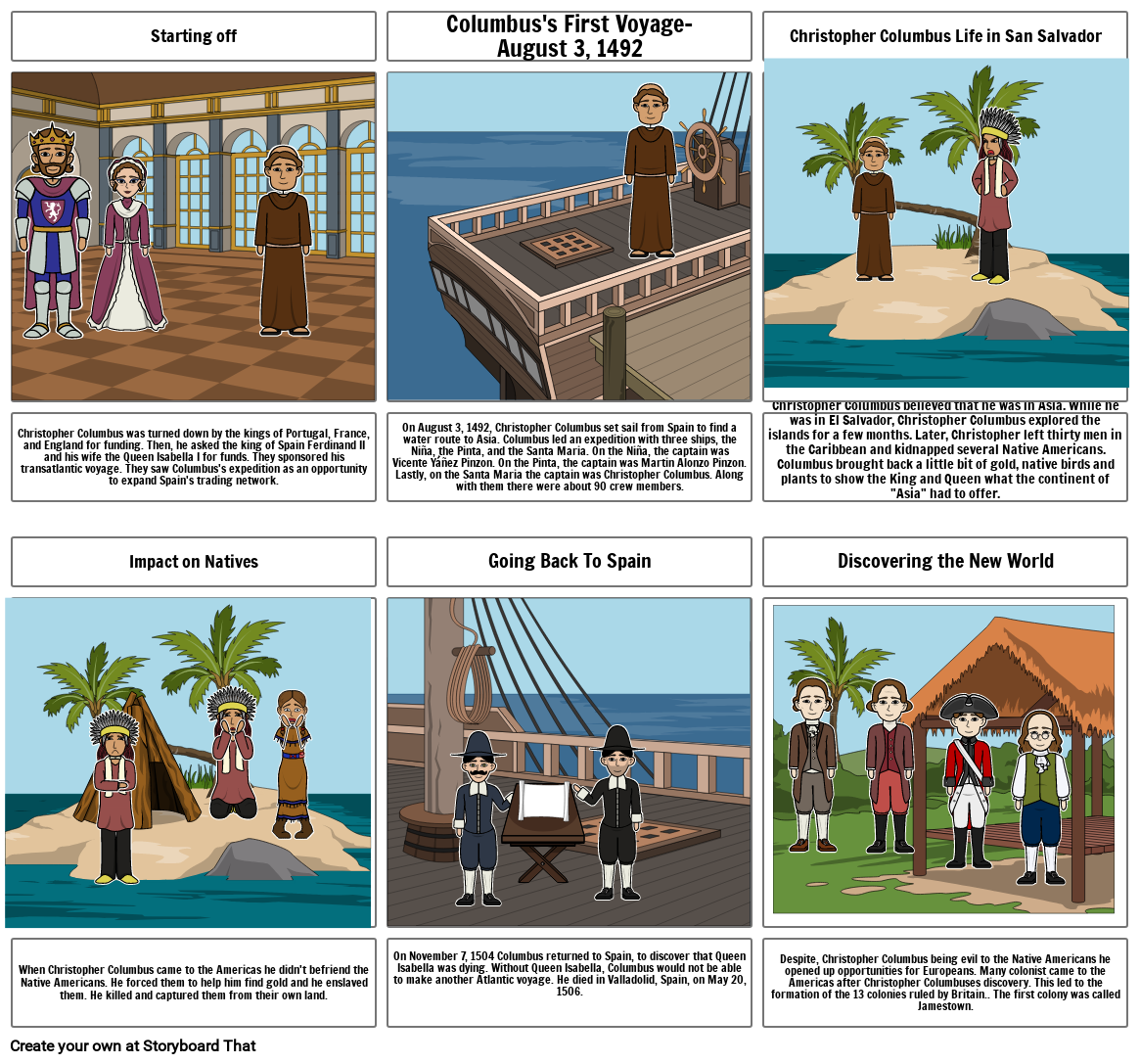unit 1 historical context

Siužetinės Linijos Tekstas
- Starting off
- Columbus's First Voyage-August 3, 1492
- Christopher Columbus Life in San Salvador
- Christopher Columbus was turned down by the kings of Portugal, France, and England for funding. Then, he asked the king of Spain Ferdinand II and his wife the Queen Isabella I for funds. They sponsored his transatlantic voyage. They saw Columbus's expedition as an opportunity to expand Spain's trading network.
- Impact on Natives
- On August 3, 1492, Christopher Columbus set sail from Spain to find a water route to Asia. Columbus led an expedition with three ships, the Niña, the Pinta, and the Santa Maria. On the Niña, the captain was Vicente Yáñez Pinzon. On the Pinta, the captain was Martin Alonzo Pinzon. Lastly, on the Santa Maria the captain was Christopher Columbus. Along with them there were about 90 crew members.
- Going Back To Spain
- Christopher Columbus believed that he was in Asia. While he was in El Salvador, Christopher Columbus explored the islands for a few months. Later, Christopher left thirty men in the Caribbean and kidnapped several Native Americans. Columbus brought back a little bit of gold, native birds and plants to show the King and Queen what the continent of "Asia" had to offer.
- Discovering the New World
- When Christopher Columbus came to the Americas he didn't befriend the Native Americans. He forced them to help him find gold and he enslaved them. He killed and captured them from their own land.
- On November 7, 1504 Columbus returned to Spain, to discover that Queen Isabella was dying. Without Queen Isabella, Columbus would not be able to make another Atlantic voyage. He died in Valladolid, Spain, on May 20, 1506.
- Despite, Christopher Columbus being evil to the Native Americans he opened up opportunities for Europeans. Many colonist came to the Americas after Christopher Columbuses discovery. Christopher Columbus also brought gold, spices and many valuables. Christopher Columbus opened up opportunities for trade.
Sukurta daugiau nei 30 milijonų siužetinių lentelių

